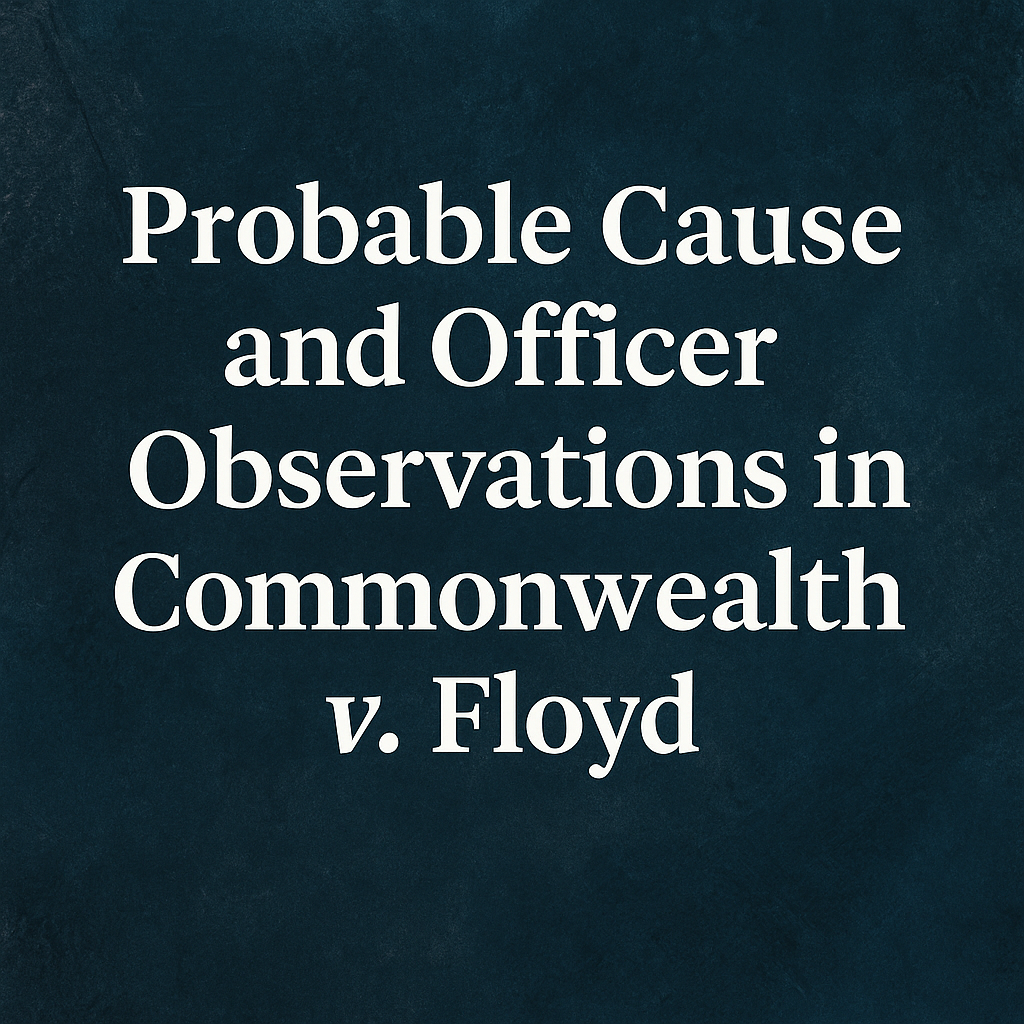The Validity of Surveillance-Based Narcotics Arrests: A Closer Look at Commonwealth v. Floyd
June 14, 2025
 Commonwealth v. Floyd, 313 A.3d 1061 (Pa.Super. 2024)
Commonwealth v. Floyd, 313 A.3d 1061 (Pa.Super. 2024)
The Validity of Surveillance-Based Narcotics Arrests: A Closer Look at Commonwealth v. Floyd
In Commonwealth v. Derrick Floyd, the Pennsylvania Superior Court reversed a trial court’s order suppressing evidence in a narcotics case, reaffirming the legal sufficiency of surveillance-based probable cause. The March 13, 2024, opinion explores how trained officers’ observations—even without the physical seizure of contraband—can meet constitutional standards for arrest and search.
Background of the Case
On September 9, 2021, Officer Gary Outterbridge of the Philadelphia Police Department's Narcotics Strike Force conducted surveillance on the 4500 block of Lancaster Avenue, a known area for high drug activity. Officer Outterbridge, positioned in a marked police vehicle and using binoculars from approximately 30 feet away, observed Derrick Floyd engage in what he believed were two separate narcotics transactions.
According to testimony, Floyd first spoke with an unidentified Black female, received U.S. currency from her, and entered the passenger side of a white Dodge Ram with Pennsylvania plate ending in 6336. After briefly sitting in the vehicle, Floyd exited and handed her small objects. Four minutes later, Floyd repeated the pattern with another woman, later identified as Myra Buchanan. He again received currency, entered the vehicle, and emerged to hand her small objects.
Following these interactions, Floyd drove away and was stopped shortly thereafter. Police recovered narcotics and other evidence from the truck.
Trial Court Suppression
The defense filed a motion to suppress, arguing the arrest lacked probable cause because the officers did not witness an actual drug exchange—only small objects changing hands. The Philadelphia Court of Common Pleas agreed, suppressing the evidence based on the conclusion that the observations did not amount to probable cause.
Superior Court's Reversal
The Commonwealth appealed, and the Superior Court reversed the suppression order. Writing for the panel, President Judge Emeritus Stevens held that the trial court erred by failing to give proper weight to the officer’s training, experience, and the totality of the circumstances.
The Court emphasized several key findings:
Trained Observation: Officer Outterbridge had extensive experience in narcotics enforcement. The brief interactions, exchange of money for unknown items, and use of a vehicle consistent with stash-keeping behavior were all classic hallmarks of street-level drug transactions.
High-Crime Area: The events occurred in a known drug trafficking corridor. While not dispositive, the location added context to the officer’s interpretation.
Corroboration of Behavior: The nearly identical sequence of events with two separate individuals, minutes apart, added credibility to the inference that Floyd was engaged in illegal sales.
Precedent: The Court cited Commonwealth v. Thompson, 985 A.2d 928 (Pa. 2009), which upheld arrests based on observed hand-to-hand transactions consistent with narcotics dealing—even absent physical recovery of contraband at the time of arrest.
The Superior Court concluded that under the totality of the circumstances, there was ample probable cause to arrest Floyd and search his vehicle incident to that arrest. The trial court’s suppression order was therefore reversed and the case remanded for further proceedings.
Legal Analysis and Implications
This case is significant for reinforcing that police observations—when viewed through the lens of training and experience—can establish probable cause even if officers do not witness drugs or directly hear conversations related to sales. The opinion strengthens law enforcement’s ability to rely on pattern recognition and contextual cues in high-crime areas to initiate stops and arrests.
However, the opinion also underscores the fine line courts must walk. If the officer had been less experienced, or if the interactions lacked the telltale characteristics of a narcotics exchange, the case might have turned out differently. The Superior Court was careful to rely on the specific, articulable facts observed by a veteran narcotics officer, not just the location or generalized suspicion.
Conclusion
Commonwealth v. Floyd is a textbook example of how Pennsylvania appellate courts evaluate suppression motions in drug cases. It reaffirms that while probable cause must be particularized and supported by facts, the observations of experienced officers can carry significant evidentiary weight. For defense counsel, it serves as a cautionary tale: arguing lack of probable cause requires more than just pointing out that the drugs weren’t seen.
As surveillance and drug enforcement strategies continue to evolve, Floyd remains a reminder that context, behavior patterns, and officer expertise all factor into the constitutionality of a stop and arrest.
